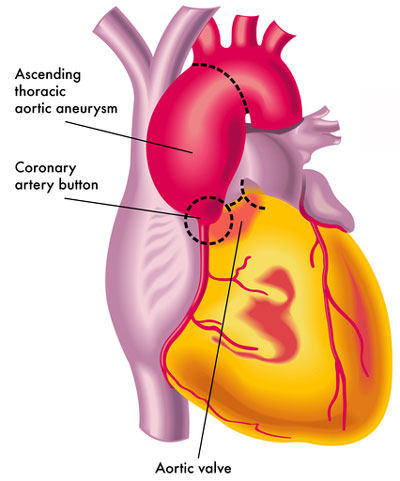“Have The Guidelines For Replacing Aortic Aneurysms Changed For Patients With Bicuspid Aortic Valves?” Asks Barbara
By Adam Pick on September 3, 2013
I just received a great question from Barbara about aortic aneurysms, bicuspid aortic valves and the guidelines used by physicians to determine treatment. In her email, Barbara wrote to me, “Hi Adam – I have a bicuspid aortic valve with stenosis. I also have an aneurysm (4.1 cm) that we have been tracking for a number of years. I have heard that the guidelines for treatment just changed from 5cm to 4.5cm. Is that true? If so, why did the guidelines change? Is this change causing more patients, like me, to get treatment earlier? Thanks, Barbara”

Barabara raises a great question considering so many patients in our community experience valvular disorders and aortic aneurysms simultaneously.
For that reason, I contacted Dr. Thomas Gleason.

In his response to Barbara’s question, Dr. Gleason shared the following, “The short answer to Barbara’s question is no, with one caveat. The recommended trigger point to treat an ascending aortic aneurysm in the setting of a bicuspid aortic valve remains 5.0 cm except among patients with a strong family history (first degree relatives) of aortic dissection for which the recommended diameter for surgical intervention is 4.5 cm. This is a minority of patients.”
Dr. Gleason then provided additional insights for patients needing bicuspid aortic valve treatment who may need an aortic aneurysm procedure in the future. “For patients undergoing cardiac surgery for a valvular or other indication who incidentally also have a bicuspid valve and associated ascending aortic dilatation, it is reasonable to replace the ascending aorta at the time of the valve or other cardiac surgery to minimize the need for a reoperation later in life. These guidelines were recently published in the Annals of Thoracic Surgery (Ann Thorac Surg 2013;95:1491–505.) — Best regards, Dr. Gleason”
I hope this helped Barbara (and perhaps you) learn more about the guidelines for aortic aneursym treatment for patient with valvular disorders including bicuspid aortic valves. Many thanks to Barbara for her question and a special thanks to Dr. Thomas Gleason for sharing his clinical experience and research with our community.
- To learn more about Dr. Gleason, please click here.
Keep on tickin!
Adam
|
Pat Sisti says on September 10th, 2013 at 1:02 pm |
|
I have to go in soon for aortic valve\aortic aneurysm .. have a lot of questions for the doctor ..do you have a set of questions that I should ask |
 |
|
Bob H. says on September 30th, 2013 at 1:24 pm |
|
Adam, Read your recent comments on the Mayo Clinic study on mitral valve surgery, and results of ‘waiting’ vs. ‘not waiting’. Do you know if there has been a similar study done for aortic valve replacement/ repair surgery candidates? Appreciate anything you may have come across. Thanks. |
 |
|
Diane says on December 7th, 2013 at 5:51 pm |
|
I’m recently diagnosed with thoracic aortic aneurysm. I’m trying to learn all I can about it, and would like to visit with others who are living the “watchful waiting” life. I’m frightened. Thank you. |
 |
|
Gil Solomon says on June 7th, 2018 at 7:03 pm |
|
Adam: The most recent (2014) AHA ACC guidelines are different than Dr. Gleason’s answer. I posted the section on bicuspid valve below: |
 |
|
Adam says on June 7th, 2018 at 7:09 pm |
|
Hey Gil, Thanks for that. Awesome! Fyi, I made a follow-up post in the news feed earlier today. I should have posted it here as well. Thanks for the reminder. For our community, Dr. Paul Fedak emailed me earlier today about this. Here is the latest information about treatment from a recent AATS research paper that he co-wrote – https://www.heart-valve-surgery.com/Bicuspid-Aortic-Valve-Aneurysm-Guidelines.pdf. Stay tuned. More to come about this shortly. |
 |
|
Gil Solomon says on June 13th, 2018 at 11:05 pm |
|
Adam: I read Page 75 as still recommending 5.5 cm if the valve does not require repair. Here is the passage: |
 |












